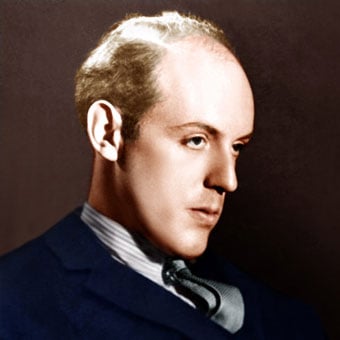
Howard Ferguson
d. 31 October 1999, Cambridge
Howard Ferguson was unusual among composers in that he voluntarily called a halt to his composing career when barely past his fiftieth birthday; his musical energies thereafter were deployed in a number of parallel enthusiasms, not least musicology.
Ferguson was born in Belfast, on 21 October 1908. At the age of thirteen he was heard performing in a music competition by the pianist Harold Samuel, who persuaded Ferguson’s understanding parents to let him come to London to study with him. Two years later Ferguson entered the Royal College of Music, studying composition first with the legendary pedagogue R. O. Morris and then with Vaughan Williams, and conducting with Malcolm Sargent; he also continued to study privately with Samuel. It was through Morris that he met another composition student, Gerald Finzi, and they remained close friends, discussing each other’s music in depth; their correspondence is currently being edited for publication.
Ferguson was always a distinguished chamber musician and he first came to widespread attention through the publication of his First Violin Sonata (1931) and his Octet (1933), generally regarded as his most masterly work. The Octet was initially drafted as a quintet for clarinet and strings, but the canny Morris, observing that there was no companion piece to share the scoring of the Schubert Octet, suggested that Ferguson recast it accordingly.
Through Harold Samuel, Ferguson had met Myra Hess, and at the outbreak of the Second World War he was enlisted by her to help run the series of concerts at the National Gallery which did so much to maintain wartime morale in London. The importance of the concerts was officially recognised when Ferguson was released from service with the RAF Central Band to continue his work with the Lunchtime Concerts. With the War over, Ferguson took up his concertising career again, maintaining two long-lived duos with musicians he had met through those National Gallery concerts, the violinist Yfrah Neaman and the pianist Denis Matthews. From 1948 until 1963 he also taught at the Royal Academy of Music, where Susan Bradshaw, Richard Rodney Bennett and Cornelius Cardew were among his students.
In the meantime he was still composing, including a Second Violin Sonata in 1946, a Piano Concerto in 1950-51 and a song-cycle, Discovery, that was later recorded by Kathleen Ferrier. Ferguson closed his career in composition with two large-scale choral works, both written for the Three Choirs Festival: Amore langeo for tenor, chorus and orchestra (1955-56) and The Dream of the Rood for soprano or tenor, chorus and orchestra (1958-59).
Ferguson’s activities as a musicologist now filled the gap left by composition, and he produced a number of authoritative editions of early keyboard music; his musicological efforts were crowned in 1978-79 with a complete edition of the Schubert piano sonatas.
Howard Ferguson is published by Boosey & Hawkes.
This biography can be reproduced free of charge in concert programmes with the following credit: Reprinted by kind permission of Boosey & Hawkes
